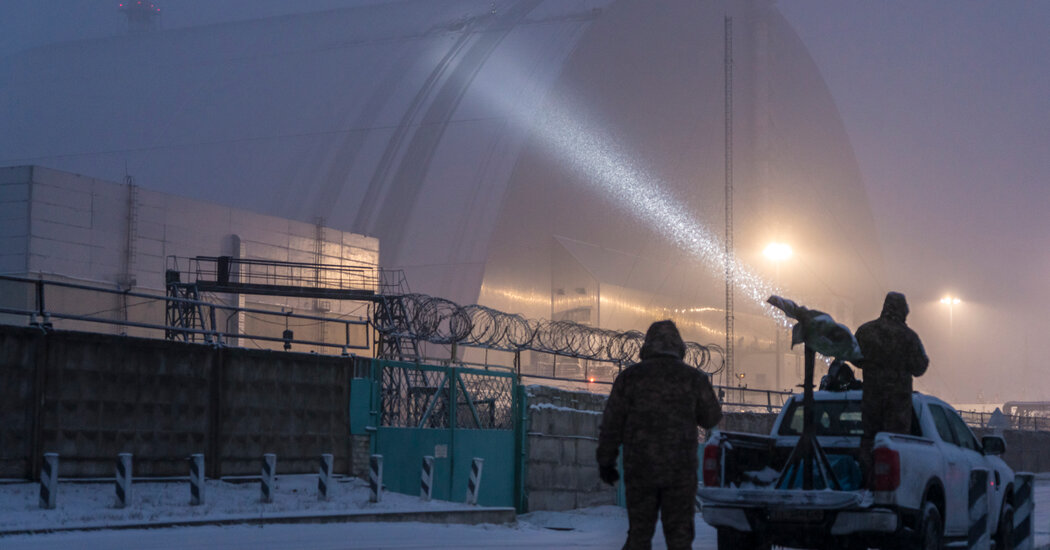The steel shell that encloses the site of the world’s worst nuclear disaster was built to endure for a century. But war was a scenario its engineers never envisioned.
Kim Barker and Brendan Hoffman traveled to Chernobyl hours after the drone strike. They later talked to experts about the damage it has done.
Eric Schmieman worked for 15 years on the modern engineering equivalent of the Great Pyramid — building a giant protective shield for a damaged reactor at Chernobyl that would protect the world from further fallout from the worst ever nuclear disaster.
The steel shell, slid into place over Reactor No. 4 on railroad tracks in 2016, is the world’s largest movable structure. It is as tall as a football field and weighs almost 40,000 tons. More than 45 countries and organizations spent almost $1.7 billion building it.
“We did a lot of safety analysis, considering a lot of bad things that could happen,” said Mr. Schmieman, 78, a retired civil engineer from Washington state who was a senior technical adviser on the project. “We considered earthquakes, tornadoes, heavy winds, 100-year snowfalls, all kinds of things. We didn’t consider acts of war.”
On Feb. 14, a drone with a high-explosive warhead that likely cost as little as $20,000 to produce punched a hole in the steel shell. Ukrainian officials said the Russians deliberately targeted the structure with a Shahed 136 drone. The Kremlin has denied responsibility.
While the initial fire was quickly put out, a waterproof membrane inside the insulation of the arch burned and smoldered for almost three weeks, said Artem Siryi, the head of the operations department for the structure, called the New Safe Confinement. Emergency workers in mountain-climbing equipment had to knock holes into the shield’s outer layer, hunting for the fire, and spray water inside a structure designed to stay dry to prevent corrosion, Ukrainian officials and international experts said.
We are having trouble retrieving the article content.
Please enable JavaScript in your browser settings.
Thank you for your patience while we verify access. If you are in Reader mode please exit and your Times account, or for all of The Times.
Thank you for your patience while we verify access.
Want all of The Times? .
Source: www.nytimes.com
